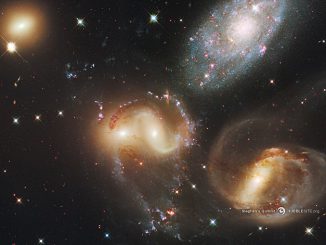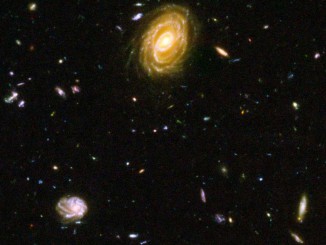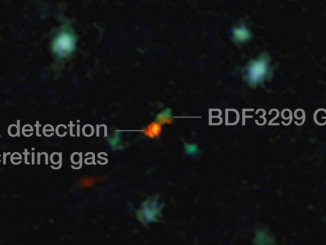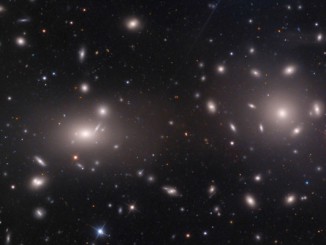
galaxies


Discovery nearly doubles known quasars from the ancient universe
Quasars are supermassive black holes that sit at the centre of enormous galaxies, accreting matter. They shine so brightly that they are among the most distant objects in the universe that we can currently study. New work from a team led by Carnegie’s Eduardo Bañados has discovered 63 new quasars from when the universe was just 7 percent of its present age.

Study explains why galaxies stop creating stars
The processes that cause galaxies to cease star formation are not well understood and constitute an outstanding problem in the study of the evolution of elliptical, spiral (such as the Milky Way) and irregular galaxies. Now, using a large sample of around 70,000 galaxies, a team of researchers may have an explanation for why some stop creating stars.

Gazing into the furnace: VST captures the Fornax Cluster
This new image from the VLT Survey Telescope (VST) at ESO’s Paranal Observatory in Chile captures a spectacular concentration of galaxies known as the Fornax Cluster, which can be found in the Southern Hemisphere constellation of Fornax (The Furnace). The cluster plays host to a menagerie of galaxies of all shapes and sizes, some of which are hiding secrets.


Sparkling Stephan’s Quintet
The Stephan’s Quintet of galaxies in the constellation Pegasus was discovered by astronomer Édouard Stephan in 1877. This image combines observations performed at three different wavelengths, with ESA’s Herschel and XMM-Newton space observatories as well as with ground-based telescopes, to reveal the different components of the five galaxies.

Earth might have hairy dark matter
Dark matter is an invisible, mysterious substance that makes up about 27 percent of all matter and energy in the universe. A new NASA study publishing this week proposes that when a stream of dark matter particles goes through a planet, the planet’s gravity bends and focuses the particles into an ultra-dense filament, or “hair,” of dark matter. In theory, there should be many such hairs sprouting from Earth.

Hubble observes galaxies’ evolution in slow motion
It is known today that merging galaxies play a large role in their evolution, and the formation of elliptical galaxies in particular. However, there are only a few merging systems close enough to be observed in depth. The pair of interacting galaxies seen here — known as NGC 3921 — is one of these systems. But ‘close’ is a relative term: NGC 3921 lies 270 million light-years away.

ALMA witnesses assembly of galaxies in early universe
The Atacama Large Millimetre/submillimetre Array (ALMA) has been used to detect the most distant clouds of star-forming gas yet found in normal galaxies in the early universe. The new observations allow astronomers to start to see how the first galaxies were built up and how they cleared the cosmic fog during the era of reionisation.

Dead galaxies may be packed with dark matter
Research using powerful computer simulations to study galaxies that have fallen into the Coma Cluster, one of the largest gravitationally-bound structures in the universe roughly 300 million light-years from Earth, suggests that it could contain as much as 100 times more dark matter than visible matter, according to an Australian study.
